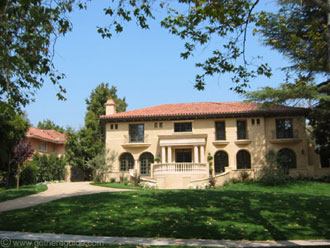San Marino is the priciest residential area in Southern California to join a growing list of cities that are now majority Asian, according to the US Census Bureau. That fact is the focus of an article published Monday in the New York Times.
The 2010 Census showed San Marino’s Asian residents making up 53.5% of the city’s population, placing them among the affluent Asian-majority Northern California cities of Milpitas (62.2%), Cupertino (61.9% Asian), Daly City (55.6%), Union City (50.9%) and Fremont (50.6%), and the Southern California Asian meccas of Monterey Park (66.9%), Walnut (63.6%), Cerritos (61.9%), San Gabriel (60.7%), Rosemead (60.7%), Rowland Heights (59.8%), Arcadia (59.2%), Temple City (55.7%) and Diamond Bar (52.5%).
What makes Asian dominance of San Marino appear to embody a new Southern California Dream in the eyes of NYT editors is the fact that the city’s average housing price is well above $1 million, about twice the value of the average home in Beverly Hills. Just a generation earlier the leafy city on the foothills of the San Gabriel Mountains was home to many of Southern California’s wealthiest families, as well as the western headquarters of the John Birch Society.
The city’s ethnic transition is newsworthy mainly because it’s merely the most photogenic aspect of an epochal shift in California’s immigration patterns. Contrary to the pervasive notion that Southern California’s growth is driven by Latino immigration, for the past five years Asians have made up twice the number of immigrants to the state.
That’s partly because Asia is producing more immigrants with the educational and financial means to score greencards. The other half of the reason is that Mexico is running out of young men desperate enough to brave the treacherous and costly crossing to toil as laborers in a sluggish US economy. In fact, the state is seeing a growing outflow of Latinos to the midwest and the northeast where aging populations desperately in need of youthful workers.
The Asianization of San Marino won’t seem particularly noteworthy to the many Asian Americans and others who have long seen the entire San Gabriel Valley as a kind of mini Asian nation dominating a 30-mile stretch of freeway eastward from downtown Los Angeles. For over a generation the area has been well marked by obviously Asian signage and an explosion of Asian restaurants and markets. More recently it has seen a proliferation of hipper eateries that serve up nouvelle Chinese and Korean fare along with lively boba tea shops that always seem to have long lines of twenty-something Asian Americans.
These youth are the products of hard-driving school systems that have been turning out the vast majority of Southern California’s elite students who now crowd the top campuses of the University of California system as well as the Ivy League, Stanford, Duke, USC and a few dozen more top US universities.
The San Gabriel Valley’s emergence as the nation’s biggest center of an emerging success-oriented Asian American culture has created a new kind of cultural pride that was unimaginable thirty years ago when the area was still seen as an Asian ghetto. Today the home prices and living standards of the San Gabriel Valley ex San Marino is comparable to those of the Westside and the South Bay where the LA-area’s shrinking white population tend to congregate.
The NYT article cites one of many videos prpduced by the Fung Brothers which celebrates the unique look and feel of the 626, aka San Gabriel Valley. The article also mentions the 626 Night Market created by Jonny Hwang to draw the SG Valley’s young Asians into temporary tent-lined food fests that approximate the feel of night markets in Taipei, as well those of Hong Kong, as well as Korea’s pojang machas, drinking tents.
The Asianization of the vast eastside isn’t without backlashes. Some of the area’s residents, including Asians, have complained about shady entrepreneurs who feed “maternity tourism” by filling local houses with Chinese women seeking to give birth to US citizens. Others have complained that the Mandarin classes being offered by most of the area’s schools are corrupting American values with un-American, even communist, influences, partly because those classes are often established with help from China’s overseas cultural initiatives.


